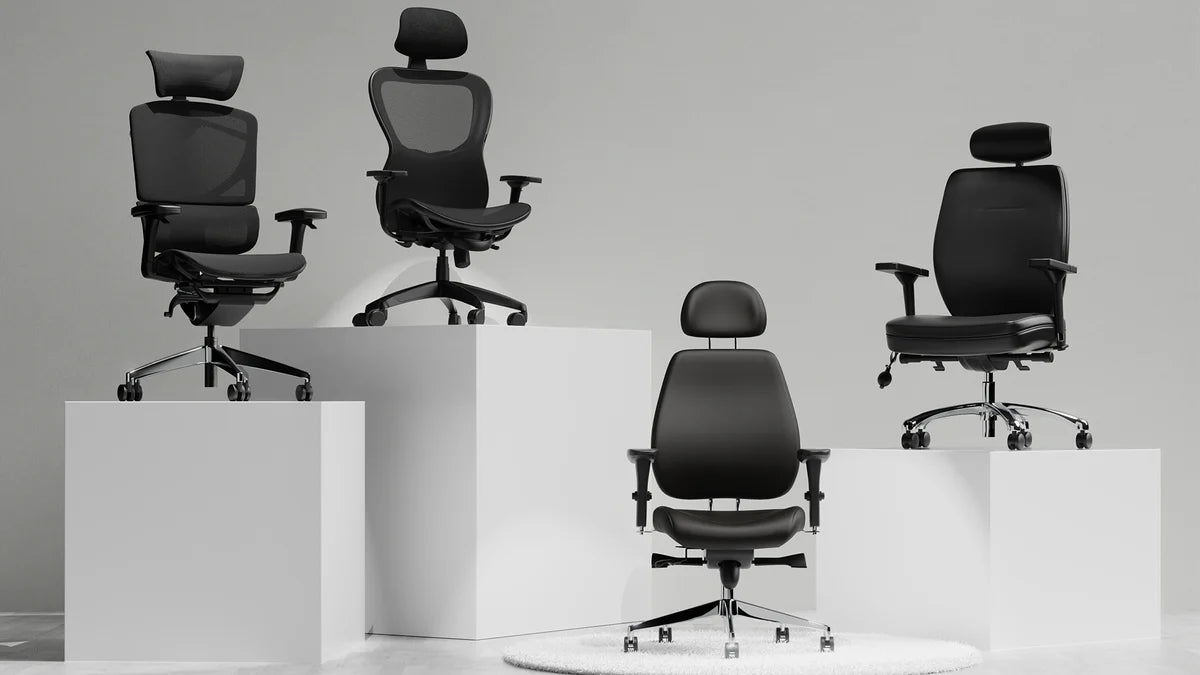Massive warehouse clearance sale! Save up to 70% off RRP - Visit us today!
Massive warehouse clearance sale! Save up to 70% off RRP - Visit us today!
Massive warehouse clearance sale! Save up to 70% off RRP - Visit us today!
Massive warehouse clearance sale! Save up to 70% off RRP - Visit us today!

May 31, 2024 3 min read
Office chairs have lumbar supports to help support people's backs and keep their spines curled naturally. Our bodies compensate by leaning forward or slouching if there is no proper support. Over time, that can lead to poor posture and back pain. We should consider lumbar support when choosing an ergonomic office chair. The 3 types of lumbar support for office chairs are adjustable, static, and dynamic.
Lumbar support for office chairs can be fixed, adjustable or dynamic. Remember the following guidelines when choosing lumbar support:
In ergonomic office chairs, lumbar support targets the lower back region. It consists of five vertebrae (cervical, thoracic, lumbar, sacral & coccyx) and curves inward.
Poor posture and discomfort can result from prolonged sitting or inadequate support for the lumbar spine.
Lumbar support maintains the natural curvature of the lower back while seated. Filling in the gap between the lower back and the chair, it provides additional support to the lumbar region.
Here are the 3 most common types of lumbar support for office chairs. Also, their strengths and weaknesses will be discussed:

Consider these 3 types of lumbar support for office chairs before making a purchase.
1. Fixed Lumbar Support
The fixed lumbar supports are the lumbar supports that are permanently attached to the backrest. They cannot be moved or altered in any way. These are usually found in leather office chairs or the lower-end.
Analysis Fixed Lumbar is more ergonomic than a chair without any lumbar support. Since each person has a unique spine curve, it can be counterproductive if the lumbar protrudes too little, or too much, for them.
2. Adjustable Lumbar Support
The adjustable lumbar supports allow manual adjustment to the lumbar region in order to suit the curvature of the spine and the depth.
There are adjustable office chair lumbar supports with different functions. The two are respectively:
(1) Height Adjustable
The lumbar support can be adjusted to the exact area of the back by adjusting the height and position.
(2) Depth Adjustable
The user can adjust the amount of protrusion outwards.
(3) Firmness Adjustable
It's usually done by turning a knob. The user can adjust the firmness and softness of the lumbar supports.
Analysis The most effective adjustable lumbar supports combine two or three of the above functions.
For your convenience, here are some examples of how the adjustable and fixed lumbar supports can be used.
3. Dynamic Lumbar Support

This type of lumbar supports can automatically adjust their depth and firmness according to changes in posture. This type of lumbar support can be adjusted to provide constant support. Some high-end chairs also have dynamic lumbar support.
Analysis Dynamic Lumbar Support is beneficial if implemented correctly. It automatically adjusts to the changes in your spine when you sit.
Place a small towel between your lower back and the back of the chair at waist height. Observe how your posture and comfort level differ with the towel. Your chair needs greater support if you feel less slouching and less pain in your back.
Recliner chairs have a range of positions and angles to adjust your seated position to your preference. With these types of chairs, you can elevate your feet to relieve back pain.

Understanding the 3 types of lumbar support for office chairs will help you make an informed decision. Lumbar support in office chairs promotes employee health and productivity. Lumbar support improves posture and reduces the risk of back pain from prolonged sitting. Chairs like these provide adequate lower back support, preventing back pain . Employees who sit in office chairs with proper lumbar support are happier, healthier, and more productive.

November 13, 2024 3 min read